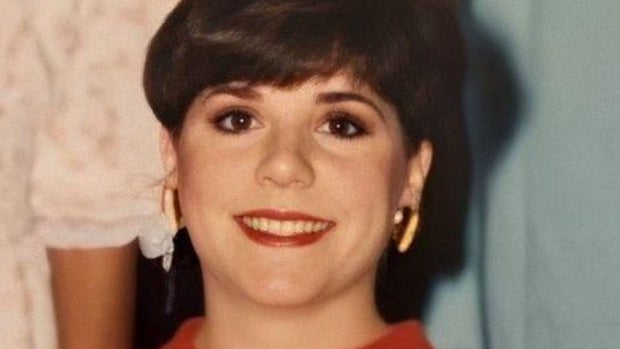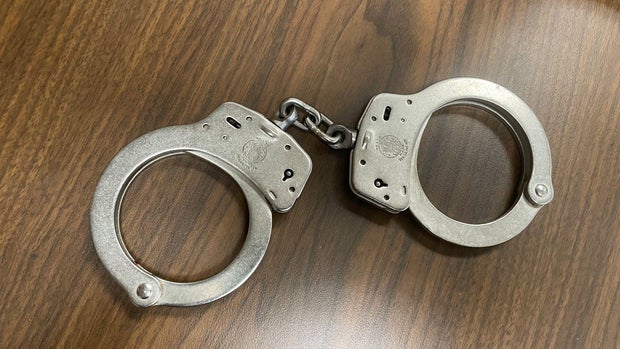CBS News
Boy kidnapped from California park in 1951 at age 6 found alive on East Coast: “Thank you for finding me”

Luis Armando Albino was 6 years old in 1951 when he was abducted while playing at an Oakland, California park. Now, more than seven decades later, Albino has been found thanks to help from an online ancestry test, old photos and newspaper clippings.
The Bay Area News Group reported Friday that Albino’s niece in Oakland – with assistance from police, the FBI and the Justice Department – located her uncle living on the East Coast.
Albino, a father and grandfather, is a retired firefighter and Marine Corps veteran who served in Vietnam, according to his niece, 63-year-old Alida Alequin. She found Albino and reunited him with his California family in June.
On Feb. 21, 1951, a woman lured the 6-year-old Albino from the West Oakland park where he had been playing with his older brother and promised the Puerto Rico-born boy in Spanish that she would buy him candy.
Instead, the woman kidnapped the child, flying him to the East Coast where he ended up with a couple who raised him as if he were their own son, the news group reported. Officials and family members didn’t say where on the East Coast he lives.
For more than 70 years Albino remained missing, but he was always in the hearts of his family and his photo hung at relatives’ houses, his niece said. His mother died in 2005 but never gave up hope that her son was alive.
Oakland police acknowledged that Alequin’s efforts “played an integral role in finding her uncle” and that “the outcome of this story is what we strive for,” the Mercury News reported.
In an interview with the news group, she said her uncle “hugged me and said, ‘Thank you for finding me’ and gave me a kiss on the cheek.”
Oakland Tribune articles from the time reported police, soldiers from a local army base, the Coast Guard and other city employees joined a massive search for the missing boy. San Francisco Bay and other waterways were also searched, according to the articles. His brother, Roger Albino, was interrogated several times by investigators but stood by his story about a woman with a bandana around her head taking his brother.
The first notion that her uncle might be still alive came in 2020 when, “just for fun,” Alequin said, she took an online DNA test. It showed a 22 percent match with a man who eventually turned out to be her uncle. A further search at the time yielded no answers or any response from him, she said.
In early 2024, she and her daughters began searching again. On a visit to the Oakland Public Library, she looked at microfilm of Tribune articles – including one that had a picture of Luis and Roger – which convinced her that she was on the right track. She went to the Oakland police the same day.
Investigators eventually agreed the new lead was substantial, and a new missing persons case was opened. Oakland police said last week that the missing persons case is closed, but they and the FBI consider the kidnapping a still-open investigation.
Luis was located on the East Coast and provided a DNA sample, as did his sister, Alequin’s mom.
On June 20, investigators went to her mother’s home, Alequin said, and told them both that her uncle had been found.
“In my heart I knew it was him, and when I got the confirmation, I let out a big ‘YES!'” she said, according to the Mercury News.
“We didn’t start crying until after the investigators left,” Alequin said. “I grabbed my mom’s hands and said, ‘We found him.’ I was ecstatic.”
On June 24, with the assistance of the FBI, Luis came to Oakland with members of his family and met with Alequin, her mother and other relatives. The next day Alequin drove her mother and her newfound uncle to Roger’s home in Stanislaus County, California.
“They grabbed each other and had a really tight, long hug. They sat down and just talked,” she said, discussing the day of the kidnapping, their military service and more.
Luis returned to the East Coast but came back again in July for a three-week visit. It was the last time he saw Roger, who died in August.
“I think he died happily,” she said, according to the Mercury News. “He was at peace with himself, knowing that his brother was found. I was just so happy I was able to do this for him and bring him closure and peace.”
Alequin said her uncle did not want to talk to the media. She said he had some memories of being kidnapped and being taken across the U.S., but the adults in his life never explained what happened, the Mercury News reported.
“I was always determined to find him, and who knows, with my story out there, it could help other families going through the same thing,” Alequin said. “I would say, don’t give up.”
CBS News
Racist texts sent to random Black Americans in multiple states, FBI investigating

Watch CBS News
Be the first to know
Get browser notifications for breaking news, live events, and exclusive reporting.
CBS News
Mountain Fire has now burned over 20,000 acres north of Los Angeles

Watch CBS News
Be the first to know
Get browser notifications for breaking news, live events, and exclusive reporting.
CBS News
Police-style handcuffs on Texas murder victim made investigators fear the killer was among them

On Jan. 14, 1995, Mary Catherine Edwards, 31, a beloved elementary school teacher, was found dead in her townhouse in Beaumont, Texas.
Her parents found her. It was a terrible scene: she was in her bathtub, handcuffed, and had been sexually assaulted. There were no signs of forced entry, which made investigators think she must know her killer. The police-grade Smith & Wesson handcuffs were always a big clue, but when detectives tried tracing the serial numbers, they came up empty. Early investigators questioned various law enforcement officers and came up with nothing either.
Texas Department of Public Safety
The case went cold, but as Beaumont police Det. Aaron Lewallen told “48 Hours” contributor Natalie Morales, “It was almost talked about like a ghost story around a campfire. Could it have been somebody that we knew?” Morales reports on the search for answers in “Tracking the Killer of Mary Catherine Edwards,” airing Saturday, Nov. 9 at 10/9c on CBS and streaming on Paramount +.
Thanks to carefully preserved DNA from the crime scene and the advent of genetic genealogy, Det. Aaron Lewallen, his wife Tina Lewallen, also a detective — along with Brandon Bess, a Texas Ranger in the cold case division, and Shera LaPoint, a professional genealogist — spent almost three months working together in a nonstop push to finally solve the case.
After all the early leads and the suspicion that someone in law enforcement had been involved, the family tree they constructed revealed someone else. Their chief suspect turned out to be not a law enforcement officer, but a man who went to the same high school as Edwards: Clayton Foreman.
And then they learned that Edwards and her identical twin sister Allison had been bridesmaids in Foreman’s first wedding. The sisters were good friends with his first wife, Dianna Coe, who also went to the same high school.
Coe remembers them fondly, telling Morales how kind they were to her when she moved to a new town and started a new school.
“I was new to the area … so, I knew no one. And they … just started talking to me and asked me my name … and we were friends from that point forward,” Coe said.
The sisters were the first people Coe thought of to be bridesmaids at her wedding. She and Foreman stayed married for 11 years. They were divorced by the time of the murder, but in hindsight, Coe began to see things in a different, darker, light. She remembered her ex-husband’s fascination with the police officers and their tools of the trade, like handcuffs and billy clubs. As Coe told Morales, “He had a billy club that he kept…by the bed. You know, said it was for protection. And I remember that he had ordered those handcuffs…Well, he had them hung over the rearview mirror.”
Coe also remembered a disturbing conversation with her ex-husband when she heard Edwards had been murdered and called to talk about it.
“I think I was, you know, crying and I said, ‘oh, my God,’ I said, ‘somebody has murdered Catherine,” Coe told “48 Hours.” “And — and he goes, ‘Oh, really?’ Just like no emotion, which I thought that was odd.”
Texas Department of Public Safety
A DNA match quickly established that Foreman had indeed been at the crime scene. And when Det. Aaron Lewallen and Ranger Bess went to question Foreman, they had an arrest warrant. They also brought something with them — something very symbolic.
Together, they had taken the time to work out an arrangement with the prosecutors so they could use the handcuffs taken as evidence at the crime scene. When they arrested Foreman for the murder of Edwards, they did so with the very handcuffs that had bound her the night she died. He wasn’t one of them, but in the course of the investigation, they learned Foreman had been falsely claiming to be a police officer.
The handcuffs — such a focus in the beginning — came full circle at the end. Bess will never forget how it felt. As he told Morales, “It’s a moment I’ll never forget…you feel like you got to do something for Catherine there…You know, like physically got to do for her, is take those cuffs that bound her when she was murdered and put them back on the guy that murdered her…It may seem small to some, but it was a really big deal to us, and it felt good.”
The jury in Foreman’s murder trial deliberated for less than an hour before finding him guilty of the murder of Edwards. Foreman was sentenced to life in prison.








